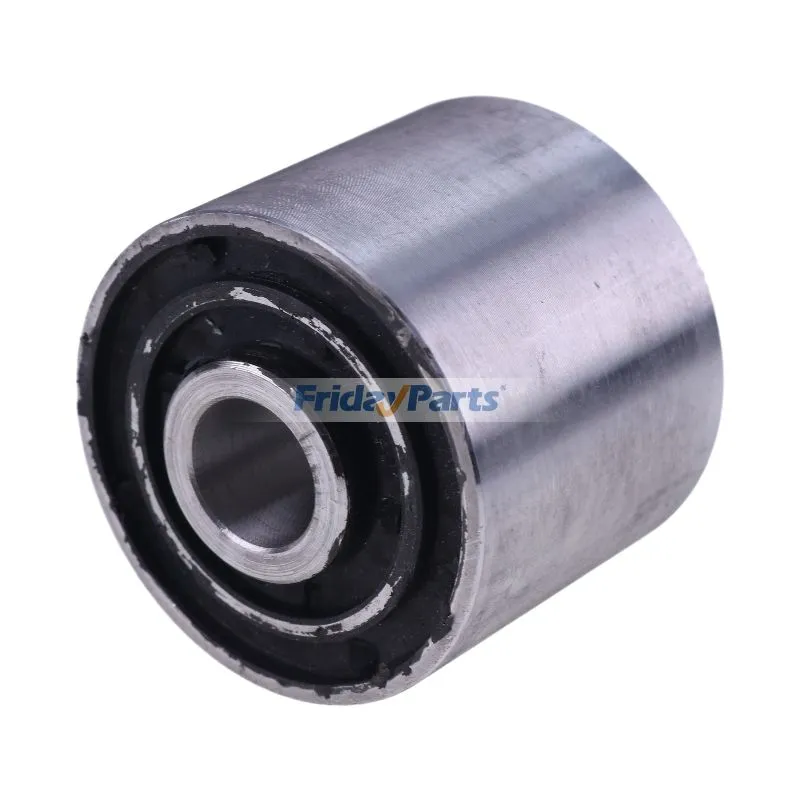Talking about excavator repair and maintenance, people often put their emphasis on some large components such as hydraulic systems, tracks, undercarriage, engines, and so on. However, some small-sized elements, excavator bushings and pins are sometimes forgotten. They are also critical elements in safe operation and duration. Here comes the question: what are bushings and pins? What role do they play in guaranteeing efficient and safe operation of heavy equipment like an excavator? What are the signs of bushings and pins wear? How to replace them? If you have those questions, this blog has you covered.
What are Excavator Bushings and Pins?
Excavator bushings and pins are critical components in the moving parts of an excavator’s arm, boom, and bucket. They are in charge of ensuring smooth movement and reducing wear between metal parts. Pins are cylindrical metal rods that connect various parts of the excavator, such as the boom, arm, and bucket, while bushings are sleeves that fit around the pins. Pins act as pivot points, allowing the moving parts to move and rotate as needed. Bushings are designed to reduce friction between the moving parts and absorb the impact and stress during operations. They are typically made from strong, wear-resistant materials like hardened steel or bronze. Together, pins and bushings allow the excavator to perform its digging, lifting, and rotating tasks efficiently.

How do I Know I Should Replace My Bushings and Pins?
There are signs of bushing and pin wear. If you notice the below signs, it is wise to have your machinery checked and your bushings and pins replaced. Key indicators include excessive play or looseness, unusual noises, misalignment, visible wear, decreased performance, and oil leaks.
Excessive Play or Looseness: If the excavator’s arm, boom, or bucket moves more than expected or feels loose, it’s a sign that the bushings or pins are worn and no longer fit tightly.
Unusual Noises: Squeaking, grinding, or knocking noises during operation, especially when moving the arm or bucket, suggest friction or metal-on-metal contact due to worn bushings or pins.
Misalignment: If the excavator parts like the boom or bucket seem to be misaligned, this could be due to uneven wear in the pins or bushings.
Visible Wear: Physical inspection works. It may reveal worn or damaged bushings, such as visible grooves, cracks, or excessive wear on the pin surfaces.
Decreased Performance: Abnormally low efficiency in lifting, digging, or rotating the excavator can indicate that the wear in bushings and pins is affecting the machine’s overall function.
Oil Leaks: Leaking grease or oil around pin locations could mean the bushings or seals are damaged, and lubrication is not being maintained effectively.
How to Replace Bushings and Pins? A Step-by-Step Guide
Replacing bushings and pins is not as hard as you may imagine. If you want to save your budget, buying compatible aftermarket bushings and pins online is a good choice. Here is a step-by-step replacement guide provided by FridayParts. With the guidance, I am sure DIY could work for you.
1. Preparation: A very practical tip is to put the new bushes in the freezer. This helps contract them, making it easier to fit them into the excavator arm later.
2. Removing Old Pins and Bushes:
There are multiple methods to remove the old pins and bushes, but you can do it with just basic tools like a rotary tool and a die grinder set.
Use the rotary tool to cut a notch in the old bush to make it easier to remove.
3. Cleaning: Before removing the bush, clean around its location using a wire wheel attachment to differentiate the bush from the arm.
4. Bush Removal: After cutting a notch, use a hammer and chisel to remove the old bush.
5. Installing New Bushes: Once the old bushes are out, remove the new ones from the freezer and hammer them into place using a copper or hide hammer (or a piece of wood to avoid damaging the bush).
6. Final Step: After installing the bushings, insert the new pins, ensuring there’s no play or movement in the setup.
Conclusion
While excavator bushings and pins may be small components, they play a vital role in the safe and efficient operation of heavy machinery. These parts ensure smooth movement in key areas like the arm, boom, and bucket, reducing friction and absorbing stress during operation. Recognizing the signs of wear, such as excessive play, unusual noises, and visible damage, is crucial for maintaining the machine’s performance. Replacing bushings and pins is a relatively straightforward task that can be accomplished with basic tools and the right guidance, making it an excellent DIY maintenance job to save on repair costs. If you are in any need of quality aftermarket bushings and pins, feel free to reach out to FridayParts.com. Our experts are here to provide you with customized services
